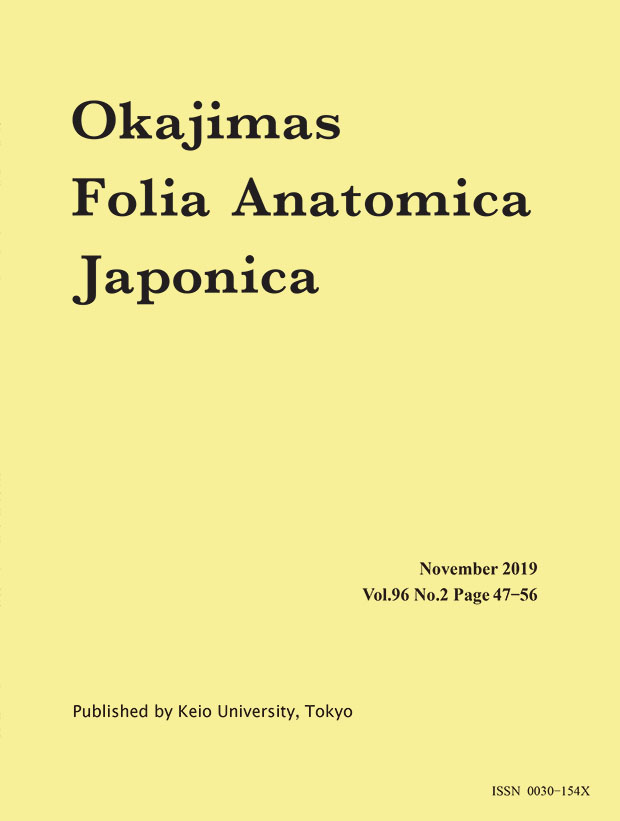
- 2 号 p. 47-
- 1 号 p. 1-
- |<
- <
- 1
- >
- >|
-
Yoshiaki KUBOTA2019 年 96 巻 2 号 p. 47
発行日: 2019年
公開日: 2019/12/27
ジャーナル フリーOkajimas Folia Anatomica Japonica was first published in 1922 through the private funding of Professor Keiji Okajima, the first head of the Department of Anatomy, Keio University School of Medicine. Back then it was the only western-language anatomical journal available in our country, through which the researchers could present their achievements worldwide. To this date, for about 100 years, it has been published periodically by the editorial committee in the department.
This time, the committee decided to put a break constructively; we suspend publication of this journal while anticipating the future resumption as a form adapted to the times. Accordingly, we have closed new submissions on September 30, 2019. Thank you for understanding and continuous support for Okajimas Folia Anatomica Japonica.
抄録全体を表示PDF形式でダウンロード (495K) -
Tomomi KURANE, Fumie KAWASE, Akira MOROOKA, Toshihiro KONNO2019 年 96 巻 2 号 p. 49-56
発行日: 2019年
公開日: 2019/12/27
ジャーナル フリーEmbryo implantation is an immunologically paradoxical event. In humans and rodents, blastocysts adhere to uterine epithelium and then invade into endometrial stroma, while maternal body is protected from extraneous materials by its immune system. Eosinophils, a kind of leucocytes involving parasitic infections and allergic response, increase in number in uterus when serum estrogen level is elevated during estrus cycles. However, response of uterine eosinophils to ovarian estrogen during peri-implantation period is not clear. Therefore, we investigated the distribution of eosinophils in murine peri-implantation uterus. On day 0.5 of pregnancy, eosinophils were found primarily in endometrial stroma near the luminal epithelium, whereas they were primarily distributed in basal endometrium and myometrium on day 3.5 of pregnancy. The number of uterine eosinophils on day 4.5 of pregnancy was significantly increased by inhibition of maternal estrogen action. Collectively, our results indicate that the ovarian estrogen negatively regulates uterine eosinophil distribution during peri-implantation period and provide insight into a role of maternal immune system in embryo implantation.
抄録全体を表示PDF形式でダウンロード (2917K)
- |<
- <
- 1
- >
- >|